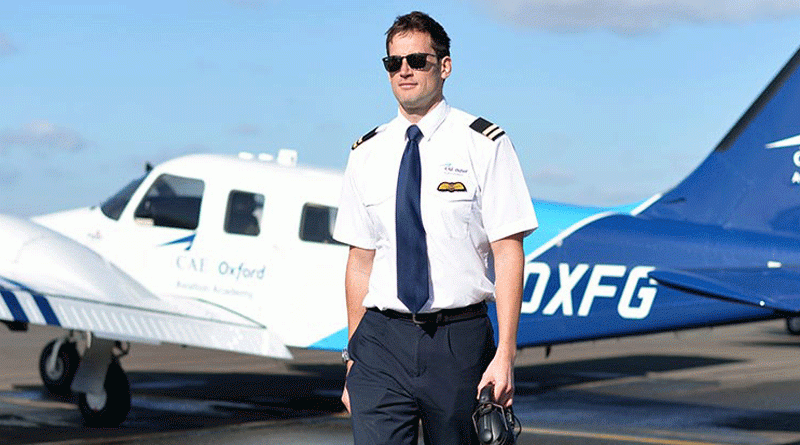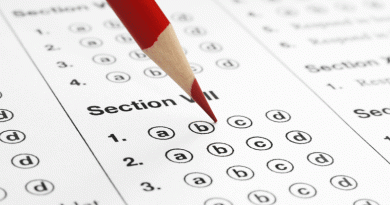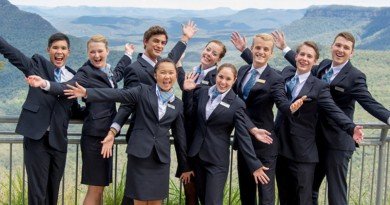What is Pilot:
Every Student wants to know how to become a pilot and wants to get a commercial pilot license? There are many pilot training institute/aviation courses to study of the pilot and fulfil your dream in pilot jobs and good salary. There is a wooming scope in aeronautical engineering as a Pilot. You Should Learn about airline pilot training before taking a decision to become a Pilot
A pilot is not a simple career as you have learned “how to drive a car?” You are the one most responsible person for hundreds of lives in a single aircraft or aeroplane. You may need to carry out more than 100 headaches before flying a passenger aircraft or other private jets.
In the term, there are two pilots. The Senior and experienced Pilot is the captain and the second one is the co-pilot. In bigger aircraft, there should be a third pilot too as the flight engineer. However, after the automatic computerized monitoring system, maximum airlines are left with only two pilots. The captain keeps surveillance to other crew members while co-pilot monitoring the system and communicate with the air traffic controllers. The different functions of air pilots are:
- have to Check the aircraft/Jets so to make its smooth functioning.
- To know about the weather condition of all the destinations en route.
- Keep a hawk-eye on speed and use according to instrument flight rules. Instrument flight rule is used during poor visibility to make coordination with air traffic controllers.
- To take almost care during takeoff and landing.
- Helicopter pilots should be careful of transmission towers and power lines.
Career Paths as Pilot:
There are two major career paths to being hired as an airline pilot: civilian or military. Each path has its own advantages and disadvantages:
Civilian
In civilian, we have two options: college or flight school. While there is no college requirement to be a pilot, college shows that you are trainable and can succeed in a challenging curriculum—both of which are necessary traits in a commercial airline pilot. You can choose to attend a college that offers a two- or four-year degree along with flight training towards the various flight certificates you will need. After this, you will need some flight experience.
Civilian flight Pilot training is very expensive. Basic flying lessons of Pilot Training start at about $80 an hour, and you will need at least 250 hours before you receive your commercial rating. It also costs a great deal to rent aeroplanes for instruction.
Military
Second option to become a commercial airline pilot is to receive your Pilot training through the military. You will have to give a commitment to a set number of years in the military Pilot after one year of pilot training (in the Air Force, this is a ten-year commitment). You will need to get other requirements, such as college course work, good health, and adequate physical abilities. There is no guaranteeing that you will pass the military flight training on the service’s rigid time schedule, or that you will be able to fly a specific aeroplane. In Airforce, You will receive the best training in the equipment that an airline pilot would fly and don’t confuse with the job of the pilot of Indian Air Force. IAF pilot is selected through NDA exam, training is free.
You must be prepared for the military life, however; it is not a commitment to take on lightly. You will have to follow orders, risk bodily harm, and use lethal weapons. If you are not able to do this, the military is probably not the best career for you.
The eligibility requirement to become a Pilot:
Do you have what it takes to become an airline pilot?
Entry requirements for Pilot Training programs vary according to the training location and local regulatory requirements and For a career in Pilot you should meet the following minimum entry criteria:
- Aged over 18 years old to commence training
- Completed Secondary School education achieving national qualifications in English Language, Mathematics and Science subjects
- Proficient in the English language
- Capable of holding a Class 1 Pilot Medical Certificate
- Successfully complete and pass the assessment process for your preferred training program
Career Requirement to become a Pilot:
| Degree Level | Bachelor’s degree |
| Degree Fields | Aircraft operations, aviation, aeronautical engineering or related field |
| Training and Experience | Up to 2 months of ground training; more 1500 hours of flight experience |
| Licensure and Certification | Commercial pilot’s license; instrument rating; airline transport pilot certificate |
| Key Skills | Strong communication, problem-solving and observation skills, good depth perception and reaction time, ability to operate aircraft computer and navigation systems |
| Salary | $120,000 per year (2014 median salary for all airline pilots, copilots and flight engineers) |
How to Become a Pilot: Education and Career in Airline Pilot
Step 1: Obtain a Bachelor’s Degree
While a college degree is not always required to get started in this career field, the U.S. Bureau of Labor Statistics (BLS) reports that airline pilots are required to have a bachelor’s degree, which can be in any major. However, aspiring pilots can gain more relevant knowledge by enrolling in an aviation or aeronautics bachelor’s program. Regardless of major, students must complete coursework in physics, aeronautical engineering, mathematics and English. It’s important to enrol in an aviation or aeronautics program that has been approved by the Federal Aviation Administration (FAA).
Step 2: Getting Flight Experience
Aspiring airline pilots are required to complete a certain number of hours of flight training to qualify for licensure. To obtain a commercial pilot’s license, 250 hours of flight time, in addition to 1,500 hours of flight time for an airline transport pilot certificate is required. Flight training can be completed through degree programs or through flying schools approved by the FAA. Airline pilots must also have a minimum of 40 hours of instrument flying experience in-air and through simulation. Instrument flying ratings demonstrate a pilot’s ability to fly in low visibility conditions.
Success Tips:
Find personal flight instructors. Although formal training provides basic education, it usually doesn’t provide enough experience to easily succeed as an airline pilot, according to ALPA. By hiring personal instructors, students have the opportunity to acquire in-depth knowledge.
Join the military. According to the ALPA, many pilots have obtained flying experience through the military. Military pilots also have the opportunity to gain substantial flight experience and are often attractive candidates for airline companies.
Step 3: Getting a Pilot’s License
To obtain a pilot’s license, a minimum number of hours of flight experience must be completed. Individuals are also expected to pass a written exam, demonstrate flying ability and take an instrument flying rating exam. As a part of the pilot’s license stipulations, individuals are required to pass a physical exam, which includes having vision correctable to 20/20, good hearing and no physical handicaps that could interfere with the job.
Step 4: Complete Additional Tests and Training
Many airline companies require pilots to take physical, psychological and aptitude tests, as well as drug tests as a prerequisite for employment. Once hired, pilots are generally required to undergo an additional 6 to 8 weeks of training, including at least 25 hours of flight time. Additionally, most new hires are brought on as co-pilots. It’s also not uncommon for some pilots to start their career at small commuter or regional airline companies. This gives them the opportunity to gain more flying experience before being hired by a major airline.
Step 5: Advance as an Airline Pilot
Most advancement in this field is based on seniority, but pilots can reach the rank of captain through other means. Airline pilots can obtain an air transport pilot’s license, which shows cross-country, night and instrument flying experience. This requires passing additional FAA written and practical exams. Pilots may also aim to acquire more flight ratings. Typically, ratings directly correlate to the type of aircraft one can fly, such as a multi-engine jet.
Success Tip:
Join a professional association. Airline pilots have the ability to continue learning and staying up-to-date with changes in the industry through membership with professional pilot associations. For example, pilots can access aircraft safety training webcasts and webinars offered by the Aircraft Owners and Pilots Association (AOPA) or safety seminars offered by the International Federation of Airline Pilots Associations (IFALPA).
Process of admission in Pilot Training course and institute after 12th science-
In case you have passed 12th Science, you may join a CPL (Commercial Pilot Licence) training program if you meet the above mentioned educational and medical standards. You may approach private institutes, fill forms and get started.
Most Pilot Training institutes have a Pilot Aptitude Test, which a candidate must clear, in order to get selected. The Aptitude Test is a 3 stage process, comprising of- written examination, Interview and the Aptitude Test.
There are subjects in the written exam like- Mathematics, Geography, General Knowledge, English skills etc. This is followed by an Interview.
Candidates who cleared these two stages are called for the third stage- Pilot Aptitude Test. After these final stages, a medical examination is conducted. After all processes, a merit list is prepared, based on the all performance of candidates in each stage of the selection process as well as the medical examination. Based on merit, deserving candidates will be selected and they provide pilot training to become Commercial Pilots!
There are different exams you can appear for (depending on your educational qualification), to become a pilot in the Indian Air Force:
A) After 10+2: Through NDA exam
The UPSC conducts the NDA (National Defence Academy) exam, clearing which you undergo a 3-year training at NDA, Khadakwasla, followed by flying training at Air Force Training Establishments. Post this, you will be commissioned as “permanent commission officers” and may be posted as pilots at any Air Force station.
Learn more about the eligibility criteria, exam pattern, dates for the NDA exam: UPSC National Defence Academy (NDA) and Naval Academy (NA) Examination
B) After Graduation
As a graduate, you can join the flying branch as a pilot by joining the “Air Force Academy” in any of the following ways:
CDSE (for men only)
UPSC conducts the Combined Defence Services (CDS) Exam for admission to either one from Indian Military Academy / Indian Naval Academy/ Air Force Academy (AFA). After training from AFA, you get a permanent commission as pilots. Learn more about the eligibility criteria, exam pattern, dates for the CDS exam: Combined Defence Services (CDS) Exam
NCC Special entry (for men only)
You can apply to the Flying Branch of the Indian Air Force if you are an Air Wing Senior Division ’C’ Certificate holder of the National Cadet Corps (NCC). Only men can join the Air Force through this mode of entry and will be given a Permanent Commission.
AFCAT (for men & women)
This exam (Air Force Common Admission Test – AFCAT) allows both men & women to get into the flying branch for Short Service Commission (SSC) i.e. for 14 years. Learn more about the eligibility criteria, exam pattern, dates for the AFCAT exam: All about AFCAT – Air Force Common Admission Test
Kind of Pilot Training provided in Pilot Training Institutes-
The training period is 1 year long in case of most institutes. Some Training Schools also have crash course kind of program, whose duration is comparatively less.
The training process can be classified into two parts-
#1 Flying Training
#2 Ground Training
Ground training is all about dealing with aspects of Aviation such as- Navigation, Air Traffic Systems and rules, working of Aircraft machines and systems, safety systems etc.
Flying training is all about mastering the ‘art’ of flying an aircraft! This is the part that proves costly in the training process!
As I said before, a candidate has to clock 200 hours of flight hours before he/she is provided with a CPL!
Now, let us talk about cost-effective methods to become a Commercial Pilot in India. So far, I’ve been providing details related to CPL training. Now, let me introduce you the low-cost way to acquire a CPL and become a Commercial Pilot.
Training Institute for becoming a Pilot:
1. Government Aviation Training Institute, Bhubaneswar
2. Coimbatore Flying Club, Coimbatore
3. Indian Aviation Academy, Mumbai
4. Jamshedpur Co-operative Flying Club Ltd, Jamshedpur
5. All India Institute of Aeronautics, (AIIA), Dehradun
6. Rajiv Gandhi Aviation Academy, Secunderabad
7. Ahmedabad Aviation and Aeronautics, Ahmedabad
8. Government Flying Training School, Bangalore
9. Indira Gandhi Rashtriya Uran Akademi, Bareli
10. West Bengal Flying Training Institute, Kolkata
11. Karnal Aviation Club, Kunjpura Road, Karnal, Haryana
12. Government Flying Club, Aerodrome, Lucknow
13. School of Aviation Science and Technology, Delhi Flying Club Ltd, New Delhi
14. State Civil Aviation, UP Govt Flying Training Center Kanpur and Varanasi
15. Rajasthan State Flying School, Sanganer Airport, Jaipur
16. Andra Pradesh Flying Club Hyderabad Airport, Hyderabad
17. Assam Flying Club, Guwahati Airport, Guwahati
18. Bihar Flying Institute, Civil Aerodrome, Patna, Bihar
19. CAE Oxford Aviation Academy
Detail on How to Become a pilot after 12th:
COMMERCIAL PILOT
If you are interested in becoming a commercial pilot then you should have a requirement of the 12th pass with Physics & Maths. After that
1. Clear DGCA class 2 medical and get your File Number.
2. Take an initial ground class for an experienced instructor.
3. Choose a good flight training school in USA, Canada, New Zealand (other than India) and take admission
4. Fly and log min of 200 hrs
5. Clear theory & flying exams and get your CPL.
For a Pilot Course, I suggest you not to contact any agents or consultancy. Do not waste your money on them. You can directly join the flight schools for your CPL training
Training cost depends on the country & school you select,
-In the USA the cost will be 16-22 lakh, duration 6 – 8 months
-In New Zealand, it will be 19-25 lakh, duration 1 year
-In India, the same course will be around 28 – 30 lakh, duration 2 – 3 years. Defence Pilot: If you are interested in becoming a pilot in Indian Airforce then,
There are mainly 2 types of entries,
(i) NDA Entry: 10 + 2 male students with Mathematics and Physics as their subjects can apply provided they are between 16 1/2 Yrs -19 Yrs of age and are unmarried. NDA Advertisements are released by UPSC in March and September every year. Aspirants must remember that UPSC releases advertisements 15 months in advance for courses commencing January and July every year. This is for permanent commission in the Flying Branch of the IAF.





Sir this year class 12 after Indian airline pliot job vacancies how
Sir this year class 10 after india airline job vacancies how
Dear Satinder,
Read these articles
http://educationafter12th.com/how-to-become-a-commercial-pilot-after-12th-class/
http://educationafter12th.com/introduction-to-aeronautical-engineering-and-top-colleges/
I am studying computer science subject so after 12 can i try for pailot. ….or not
Yes you can become pilot after 12th,,,,Good Luck Fursang 🙂
I’m science student… So after 12th pass i can try for indian pilot
required percentage for getting admission in pilot training school
It is depends on Year of admission and institute